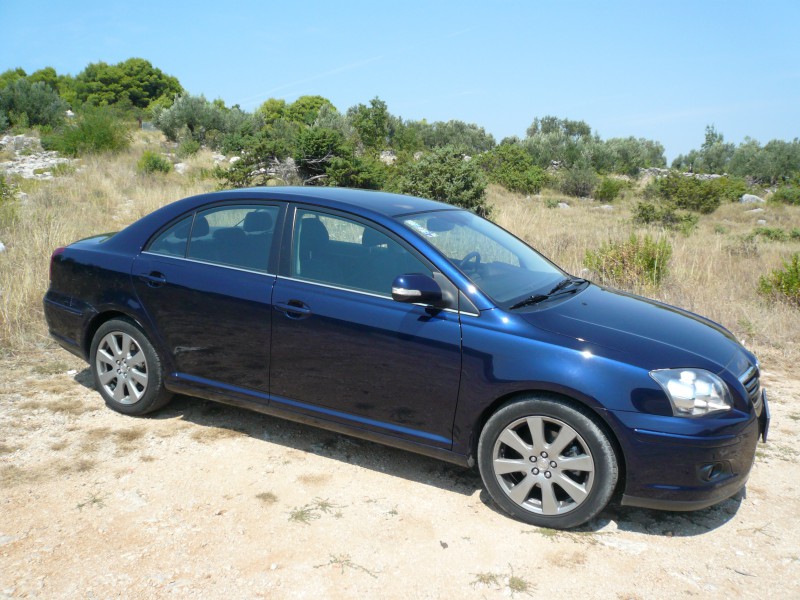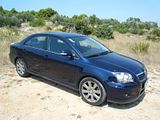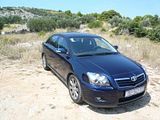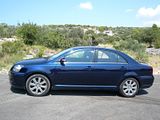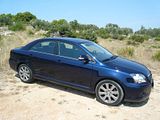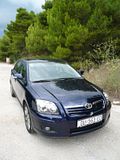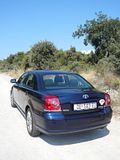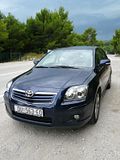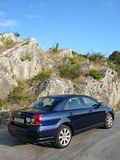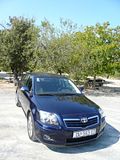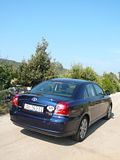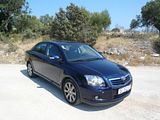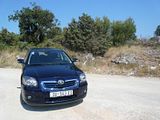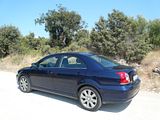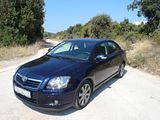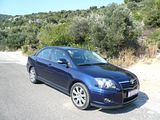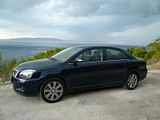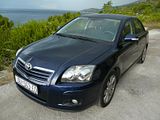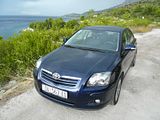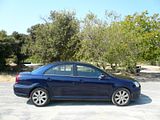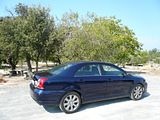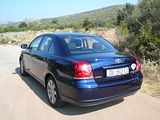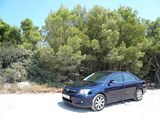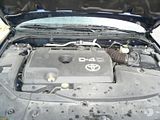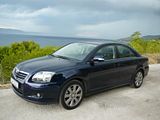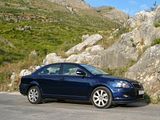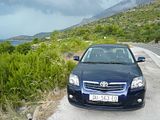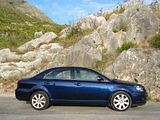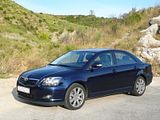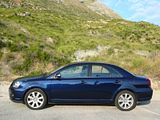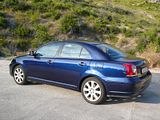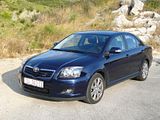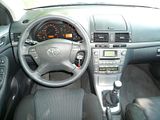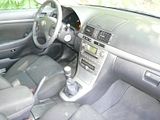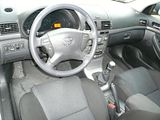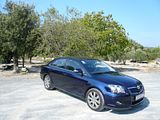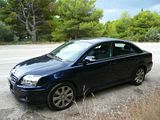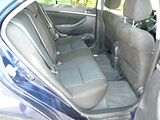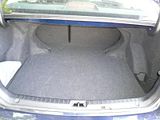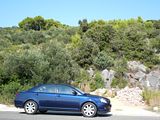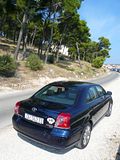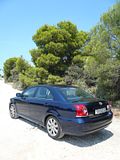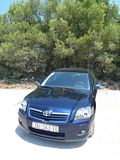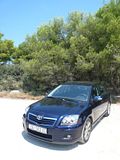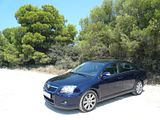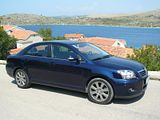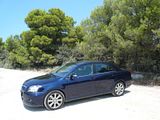Last year, I concluded my test of what is now the previous generation Avensis, which I sampled in Estate car format, by saying that it was an “honest motor car”. With the exception of the noise levels, I found little to criticise, though I did conclude that it was not a car for the automotive enthusiast. When I arrived recently at Dubrovnik airport, expecting a “small saloon”, such as Focus or a Linea as a rental car, Avis offered me the choice of either a downgrade (err, no, not to a Corsa 1.2, thanks!) or a significant no-cost upgrade to an Avensis Saloon, in 2.0 Diesel format. Faced with the prospect of a long drive up the Magistrala, coast road, to Split, I welcomed the opportunity to take a bigger engine and what I hoped would be a more comfortable car. So, this test relates what I found.
Having tried, and completely failed to undertake a damage inspection of a dark blue car in almost total darkness (!), I got in, adjusted the things you adjust to get comfortable, turned the key, and wondered if it was really a diesel. There is just a very slight trace of the unmistakeable “diesel rattle” as you fire the engine, but this is gone within an instant. Indeed, as I pulled away, I really did wonder if they had made a mistake with the paper work, as this really did sound like a petrol engined car. Over the course of the rest of the rental, I noticed that only when you were driving on a very light throttle, almost in “too high” a gear, was there any aural evidence of derv power under the bonnet. This has to be one of the most noise-suppressed diesels I’ve ever driven. In many ways, it goes like a petrol engined car, too. Or rather, I should say, like a petrol engined car used to do, before they were all saddled with CO2 optimising high gearing and a ludicrous lack of torque that makes so few of the under 2 litre class even acceptable to drive these days. The hilly coastal roads on which I did all the testing are not a place where you discover much about straight line performance of a car, and indeed I think I only managed to make use of the 6th gear in the ‘box on a couple of (brief) occasions, but I can report that for these roads, the engine did a fine job. There is plenty of torque, as you might expect in a modern turbo diesel, but if you change down a gear, there’s also decent power, which was very useful for wooshing past some of the very slow and tentative drivers that I encountered on that long night journey all the way up the Dalmatian coast. You are aware of the turbo, as you can hear a faint whine from it from time to time, but otherwise, this is quite a relaxing drive and the noise levels are so much lower than in that 1.8 litre Estate that I drove in Switzerland last year. In a test distance of 700km, I averaged 44 mpg. Not brilliant, but given the nature of the roads, perfectly acceptable, especially when I discovered that Croatia is one what now seems to be a minority of countries where diesel fuel is significantly cheaper than petrol.
No-one is likely to buy a car like this for the fun of driving it. About the only competitor which excels in this respect is the Mondeo. That said, there appeared to be no serious weaknesses with the dynamics of the Avensis. Steering is light, precise and positive, but not as satisfying as the Ford. Handling, the same. The Avensis corners tidily, with just a bit of body roll, and ultimately it will understeer, but I was not going to test gravity and explore the sides of the road by pushing it too hard, even in the daylight! No issues with the brakes, though they never got much of a serious test, as the hills are nothing like as steep as the Alps. This generation of Avensis is still blessed with a proper pull-up lever handbrake located between the front seats. Sadly, the replacement car has followed fashion and gone electronic. The Avensis rides well, and thanks to the low noise levels, even without the benefit of getting to sixth gear, it proved a relaxing ride, and I arrived at the hotel on the first night, at 1am, not feeling unduly wrecked from the experience.
Driving the Avensis at night, on very dark roads did reveal a significant shortcoming with the headlights. On dipped beam, they are useless. So bad, in fact, that I stopped to get out and check both lights were working. On main beam, though, they were absolutely fantastic, shedding more than enough light to see exactly what surprises the road had in store next. The poor lights were about the only feature that I found that was less than satisfactory, though. The Avensis is easy to drive, with intuitively located controls and a clear instrument display. The dash on this car was exactly the same as that of the Swiss-spec Estate from 2008, with just a completely different gearlever to distinguish them. That means a main binnacle of dials that illuminate orange when the ignition is turned on, with larger instruments for speedo and rev counter and smaller gauges for fuel level and temperature. The wheel on this car was plastic covered, not leather, and contains controls for the stereo system. The stereo unit itself, and the air conditioning/climate control system are in the middle of the dash, and proved easy to set, and the last of these well up to the 30 degree heat that I experienced. The column stalks are typical, Japanese-style rather chunky affairs, with turn knobs on the end of the left hand one for the lights. I was pleased to find an automatic light setting, but then discovered that the lights come on with the ignition anyway (only a requirement in winter months in Croatia, but an all year round necessity in Bosnia). The automatic sensor for the wipers was useful when the rain started, and then it was able to accelerate sufficiently to cope with can only be described as a torrential downpour that followed a storm on the second day of the test.
This is, above all else, a family car. The modern day Cortina, if you will, and had today’s Mondeo Man not gone all badge conscious and bought a premium-branded BMW or Audi, he and the oft cited 2.4 children would doubtless be perfectly happy with the Avensis. There is generous room in the back of the car, and there is a good sized boot. It is a regular shape, deep from front to back, wide and with ample height. The rear seat backrests fold down should more length be required. There is just a trace of intrusion from stiffeners inside the wheel arch area, but nothing like the extent to which this was to be found in the Vectra, where it had the effect of significantly narrowing the width of the boot. Inside the cabin, there is a decent glove box, door pockets and a deep central cubby area between the seats behind the handbrake. There is a small lidded stowage area on the top of the centre of the dash,and there is a small area to the right of the handbrake. Many of the recent Toyota that I have experienced have shown marked signs of scratching of the plastic, especially around the steering column lock area, but this one had no such damage. It did have what I guess could have been a cigarette burn on the front passenger seat, though, where the rather nasty cheap seat covering the size of a 1p coin had gone right down to foam. Outside the car, it was rather more scarred, as you might expect from a year on the rental fleet.
If the 1.8 Estate Avensis was “an honest motor car”, then I need to find a suitable phrase to describe the 2.0 D4D. With a much better engine, and far lower noise levels, it is unquestionably a better car than the petrol version, and would be well worth the extra purchase price. “Desirable” is too strong. No-one is seriously going to dream that one day they can have something which, let’s be honest about it, is rather more of a utility than something to stir the soul. I think I will have to settle for “a competent motor car” to describe this one. That would seem to sum it up perfectly. No real weaknesses, but nothing to get you excited. It merely does what you would hope and expect it to do. Rather well.

